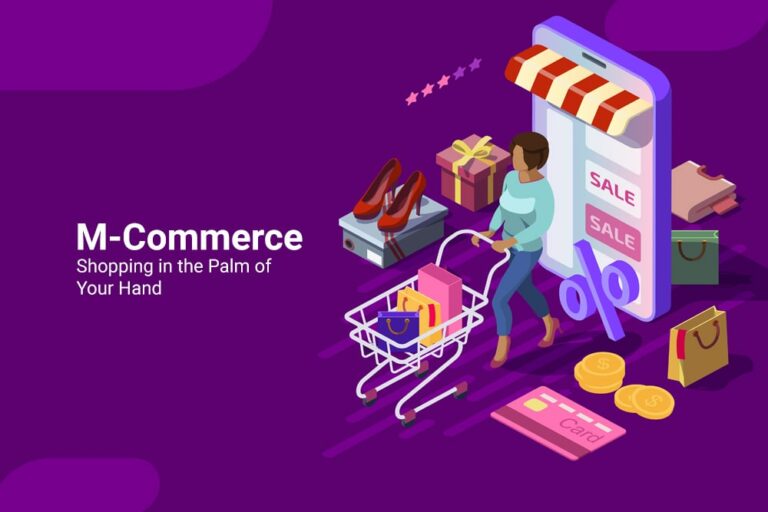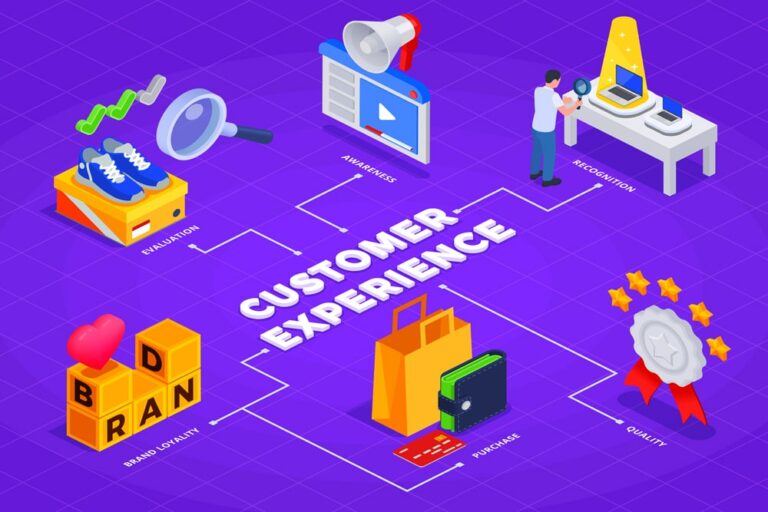In the ever-evolving landscape of e-commerce, one term has risen to prominence as the beacon of a new era in retail: “omnichannel retailing.” As technology continues to reshape the way we shop, consumers’ expectations have reached unprecedented heights. They demand not only convenience and variety but also a seamless shopping experience across both digital and physical channels. This is where omnichannel retailing steps in, redefining the way businesses interact with their customers and paving the way for the future of e-commerce.
A Seamless Shopping Odyssey
Omnichannel retailing is more than just a buzzword; it’s a strategic approach that revolves around providing customers with a unified, frictionless shopping journey. It acknowledges that consumers no longer distinguish between online and offline channels — they simply expect a brand to be present and available wherever and whenever they need it. From mobile apps and e-commerce websites to brick-and-mortar stores and social media platforms, omnichannel retailing aims to create a cohesive ecosystem that seamlessly connects these touchpoints.
The Shifting E-commerce Paradigm
This article delves into the exciting realm of omnichannel retailing, exploring its definition, benefits, and essential components. We will uncover why businesses worldwide are embracing this approach and how it’s transforming not only the way they operate but also the way they connect with their customers. Moreover, we’ll peek into the future of e-commerce to understand where omnichannel is headed and how emerging technologies are steering this transformative journey.
So, fasten your seatbelts as we embark on a journey through the fascinating world of omnichannel retailing — a journey that promises to redefine the very essence of e-commerce and set new standards for the retail industry. Welcome to the future of shopping, where convenience, personalization, and seamless experiences reign supreme.
Benefits of Omnichannel Retailing
Omnichannel retailing offers a plethora of advantages for both retailers and customers, making it a pivotal strategy in the world of e-commerce. Here are the key benefits:
Enhanced Customer Experience: Omnichannel retailing places the customer at the center of the shopping journey. Customers can seamlessly switch between online and offline channels, accessing product information, making purchases, and receiving support wherever and whenever they prefer. This convenience results in a more satisfying and user-friendly shopping experience.
Increased Customer Loyalty: By providing consistent, convenient, and personalized experiences across channels, retailers can foster stronger customer loyalty. When customers feel valued and understood, they are more likely to return and become brand advocates, ultimately driving higher lifetime value.
Improved Customer Insights: Omnichannel strategies generate a wealth of data from various touchpoints. Retailers can use this data to gain deeper insights into customer behavior, preferences, and purchasing patterns. This information enables more effective marketing campaigns, better inventory management, and product assortment optimization.
Optimized Inventory Management: Omnichannel retailing allows retailers to leverage their entire inventory network, including physical stores, distribution centers, and online warehouses. This leads to more efficient inventory management, reduced overstock, and fewer out-of-stock situations, ensuring that customers can find what they need when they need it.
Increased Sales and Revenue: When customers can shop seamlessly across channels, retailers can capture sales that might have otherwise been lost. For example, if a product is out of stock in one store, customers can easily check availability at nearby locations or order online. This flexibility boosts overall sales and revenue.
Better Marketing ROI: Omnichannel strategies enable more targeted and personalized marketing efforts. Retailers can use data to segment their customer base and tailor promotions, product recommendations, and advertisements to specific audiences. This results in a higher return on investment (ROI) for marketing campaigns.
Competitive Advantage: As omnichannel retailing becomes more prevalent, it differentiates forward-thinking retailers from competitors who have not yet embraced this approach. It positions retailers as innovative and customer-focused, which can attract new customers and retain existing ones.
Adaptation to Changing Consumer Behaviors: Consumer behaviors and expectations continue to evolve. Omnichannel retailing provides the flexibility to adapt to these changes rapidly. Whether it’s accommodating new shopping habits or integrating emerging technologies, omnichannel retailers can stay ahead of the curve.
Cost Savings: While implementing omnichannel strategies requires an initial investment, it can lead to cost savings in the long run. Better inventory management, reduced returns, and more efficient use of resources contribute to improved cost control.
Global Reach: Omnichannel retailing transcends geographical boundaries. Retailers can expand their reach and access new markets without the need for physical store expansions. This global scalability can significantly boost revenue and market presence.
Environmental Sustainability: By optimizing inventory and reducing the need for expedited shipping, omnichannel retailing can lead to more sustainable practices. Fewer emissions from transportation and less packaging waste contribute to a greener and more eco-conscious approach to commerce.
In summary, omnichannel retailing offers a multitude of benefits that revolve around enhancing the customer experience, increasing revenue, and improving operational efficiency. Retailers that embrace this strategy are poised to thrive in a rapidly changing retail landscape.
Demystifying Omnichannel Retailing
Omnichannel retailing is more than just a buzzword; it’s a strategic approach that has revolutionized the way businesses engage with consumers in the digital age. At its core, omnichannel retailing is about providing customers with a seamless and integrated shopping experience across various channels and touchpoints. Whether a customer interacts with a brand online, in a physical store, through a mobile app, or via social media, the experience should be consistent, cohesive, and customer-centric.
Channel Integration: At the heart of omnichannel retailing is the integration of all available sales and communication channels. This includes physical stores, e-commerce websites, mobile apps, social media, email, and even emerging technologies like augmented reality. These channels should operate synergistically, sharing data and insights to create a unified view of the customer.
Customer-Centric Approach: Omnichannel retailing revolves around the customer. It’s about understanding their preferences, behaviors, and needs and tailoring the shopping experience accordingly. This approach goes beyond merely selling products; it’s about building lasting relationships with customers by delivering value at every touchpoint.
Seamless Shopping Journey: In an omnichannel strategy, customers can start their shopping journey on one channel and seamlessly transition to another without friction. For instance, a customer might research a product on a mobile app, visit a physical store to see it in person, order it online, and receive post-purchase support through social media—all without feeling like they’ve left the brand’s ecosystem.
Data-Driven Insights: Data is the lifeblood of omnichannel retailing. Businesses collect and analyze data from various touchpoints to gain insights into customer behavior, preferences, and trends. This data-driven approach allows for personalized marketing, product recommendations, and inventory management.
Operational Efficiency: Omnichannel retailing isn’t just about enhancing the customer experience; it also streamlines internal operations. Inventory management becomes more efficient, as stock levels are updated in real-time across channels. This leads to reduced instances of out-of-stock items and improved inventory turnover.
Flexibility and Adaptability: In today’s rapidly evolving retail landscape, flexibility is paramount. Omnichannel strategies empower businesses to adapt to changing consumer behaviors and emerging technologies. For example, during the COVID-19 pandemic, many retailers quickly pivoted to offer curbside pickup and contactless payment options to meet customer demands for safety and convenience.
In essence, omnichannel retailing is a customer-centric, data-driven, and adaptive approach to retail that seeks to provide a unified shopping experience, regardless of how or where a customer chooses to engage with a brand. It’s a response to the evolving expectations of consumers in a digital world and a testament to the ever-expanding possibilities of modern technology.
Key Components of a Successful Omnichannel Strategy
A well-executed omnichannel strategy comprises several essential components that work together to deliver a seamless and satisfying customer experience. Here are the key elements:
Unified Customer Profiles: Central to an omnichannel strategy is the creation of unified customer profiles. This involves gathering and integrating customer data from various touchpoints, such as online interactions, in-store purchases, and mobile app usage. These profiles provide a 360-degree view of the customer, enabling personalized marketing, recommendations, and tailored experiences.
Consistent Branding: Maintaining consistent branding across all channels is crucial. Customers should recognize your brand’s identity, messaging, and design whether they interact with you through your website, social media, mobile app, or physical store. This consistency fosters trust and reinforces brand loyalty.
Seamless Cross-Channel Integration: Ensure that all your channels are seamlessly integrated. This means that customers can transition from one channel to another without any disruption. For example, they can start shopping online, add items to their cart, and then visit a physical store to complete the purchase without encountering any hiccups.
Inventory Management: Real-time inventory visibility is essential. When customers check product availability online, it should reflect accurate, up-to-the-minute information. Implement inventory management systems that synchronize stock levels across all channels to avoid issues like overselling or understocking.
Flexible Fulfillment Options: Offer flexible fulfillment options to cater to different customer preferences. This includes in-store pickup, curbside delivery, same-day shipping, and subscription services. Providing multiple fulfillment choices enhances convenience and meets varying customer needs.
Mobile Optimization: Given the increasing use of smartphones for shopping, optimizing your online store and mobile app for mobile devices is paramount. Ensure that the user experience is smooth and intuitive on smaller screens, with fast loading times and mobile-friendly navigation.
Robust Data Analytics: Leverage data analytics tools to gain insights into customer behavior and preferences. Analyzing this data helps you refine your marketing strategies, product offerings, and inventory management. It also allows for effective personalization and targeted marketing campaigns.
Personalization Engines: Implement personalization engines that use artificial intelligence and machine learning to deliver tailored recommendations and content to customers. Personalization enhances engagement, conversion rates, and customer satisfaction.
Secure Payment Solutions: Prioritize secure and convenient payment options. Customers should feel confident that their financial information is safe when making online or in-store purchases. Offer a variety of payment methods, including mobile wallets and contactless payments, to accommodate diverse preferences.
Customer Support Integration: Seamlessly integrate customer support across channels. Whether customers reach out via phone, email, chat, or social media, ensure that support agents have access to customer history and data to provide efficient and personalized assistance.
Testing and Optimization: Continuously test and optimize your omnichannel strategy. A/B testing, user feedback, and performance analytics can help identify areas for improvement and fine-tune the customer experience.
Scalability: Plan for scalability as your business grows. Ensure that your infrastructure and technology stack can handle increased traffic, transactions, and data volume without compromising performance or security.
Incorporating these key components into your omnichannel strategy lays the foundation for a customer-centric approach that can drive sales, enhance brand loyalty, and position your business for success in the competitive e-commerce landscape.
The Future of E-commerce: Where Omnichannel Is Headed
As e-commerce continues to evolve, the future of retail lies in the seamless integration of online and offline channels through omnichannel strategies. Here’s a glimpse into where omnichannel retailing is headed:
Augmented Reality (AR) and Virtual Reality (VR): AR and VR technologies are set to transform the e-commerce landscape. Retailers are exploring AR and VR applications that allow customers to visualize products in real-world settings before making a purchase. For example, shoppers can virtually try on clothes, visualize furniture in their living rooms, or test out cosmetics through AR-powered apps. This immersive experience enhances customer confidence and reduces the likelihood of returns.
Voice Commerce: Voice-activated devices like smart speakers are becoming increasingly popular for online shopping. Integrating voice commerce into omnichannel strategies will be crucial. Retailers will need to optimize their websites and apps for voice search, enabling customers to browse and purchase products using voice commands.
Artificial Intelligence (AI) and Chatbots: AI-driven chatbots and virtual assistants are expected to play a more prominent role in customer interactions. They will provide real-time support, answer product-related queries, and offer personalized recommendations. AI will also power predictive analytics, enabling retailers to forecast customer demand more accurately.
Sustainability and Ethical Shopping: Conscious consumerism is on the rise, and shoppers are increasingly concerned about the environmental and ethical impact of their purchases. Retailers will need to incorporate sustainability into their omnichannel strategies by offering eco-friendly products, providing transparent sourcing information, and supporting ethical practices throughout the supply chain.
Hyper-Personalization: The future of e-commerce lies in hyper-personalization. Retailers will leverage AI and machine learning algorithms to analyze vast amounts of customer data and deliver highly customized shopping experiences. This includes personalized product recommendations, content, and marketing messages tailored to individual preferences and behaviors.
Social Commerce: Social media platforms are evolving into shopping hubs. Retailers will need to integrate their e-commerce platforms with social media channels to enable seamless shopping experiences. Customers can discover, research, and purchase products directly through social platforms, blurring the lines between social engagement and e-commerce.
Blockchain for Supply Chain Transparency: Blockchain technology will enhance supply chain transparency. Retailers can use blockchain to trace the origin of products, verify authenticity, and provide customers with a tamper-proof record of a product’s journey from manufacturer to doorstep. This transparency builds trust and reduces counterfeiting concerns.
Delivery Innovations: The race for faster and more convenient delivery options will continue. Expect innovations such as drone deliveries, autonomous vehicles, and micro-fulfillment centers to become more widespread. Retailers will need to adapt their supply chain and last-mile delivery strategies to meet customer expectations for speed and convenience.
Unified Commerce: The lines between online and offline retail will blur even further, with unified commerce becoming the norm. Shoppers can initiate transactions through one channel and complete them through another seamlessly. This requires retailers to invest in technology that supports unified inventory management and customer data integration.
Data Privacy and Security: As the volume of customer data collected grows, so does the importance of data privacy and security. Retailers will need to prioritize robust cybersecurity measures, comply with evolving data protection regulations, and earn customer trust by safeguarding their personal information.
In summary, the future of e-commerce will be shaped by innovations that enhance customer experiences, foster sustainability, and leverage cutting-edge technologies. Retailers that embrace these trends and prioritize omnichannel strategies will be well-positioned to thrive in the evolving retail landscape.




